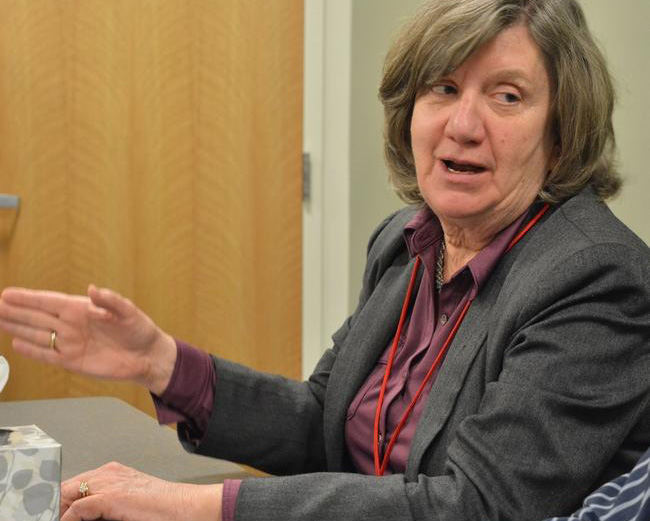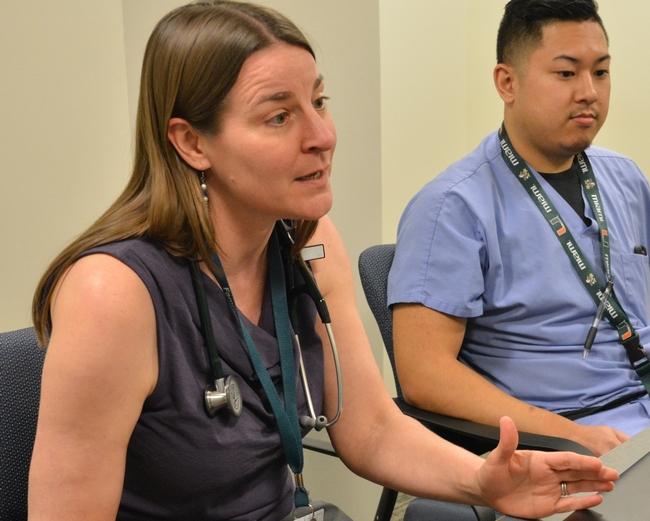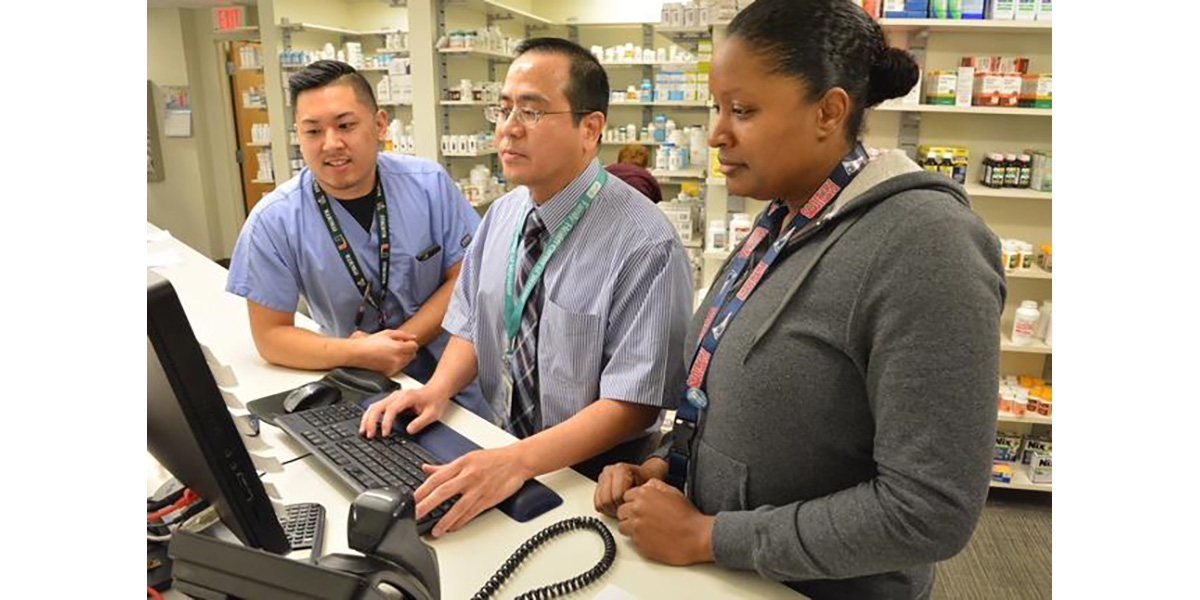

WORCESTER – State lawmakers proudly touted Massachusetts’ history of innovation and progressive policy earlier this month as Gov. Charles D. Baker Jr. signed legislation to combat opioid addiction and reduce prescription drug abuse.
Medical professionals on the front lines of the opioid epidemic in Worcester share that optimism.
“I think it’s a nice step forward. I’m thrilled about it. I’m glad that we’re dealing with it,” said Dr. Matilde Castiel, Worcester’s public health commissioner and founder and former executive director of the Hector Reyes House, a substance abuse treatment facility and transitional house for Latino men in Worcester. “Certainly there is a lot more that needs to be done, but every piece we do is important in the process, and I’m thrilled that the Legislature is looking at it and taking positive steps to deal with this issue.”
Mr. Baker choked up as he signed legislation March 14 that he said was the first in the country to include measures to limit and more effectively regulate opioid prescriptions and improve access to substance abuse care for those who have overdosed while boosting prevention and education efforts to curb abuse and addiction.
The measures specifically include:
- Limiting first-time opioid prescriptions – whether to a first-time patient or a patient who is seeing a new doctor for the first time – to seven days; and creating a “partial-fill option” so patients with acute but short-term pain can choose to fill only a portion of their prescription.
- Requiring prescribers to check the Prescription Monitoring Program whenever prescribing certain narcotics. Long-acting, extended-release opioids require the prescriber and recipient to have a written pain-management treatment agreement.
- Requiring overdose patients in emergency departments to have a substance-abuse evaluation within 24 hours and notifying parents (of minors) and primary care physicians of an overdose victim.
- Requiring school districts to establish substance-abuse prevention policies and require new training programs to be developed for law enforcement and health care providers.
The progressiveness of the state legislation was amplified the next day when the Centers for Disease Control and Prevention issued guidelines stating that “prescription painkillers should not be a first choice for treating common ailments like back pain and arthritis,” urging primary care doctors to try physical therapy, exercise and over-the-counter pain medications before turning to prescription painkillers.
The CDC guidelines, although voluntary, could be adopted by hospitals, insurers and state and federal systems. They include a 72-hour limit to painkiller prescriptions for short-term pain, similar to a measure Mr. Baker proposed in his initial legislation but that was rolled back in the law he signed.
Dr. Dennis Dimitri, who as president of the Massachusetts Medical Society had testified against the 72-hour provision in favor of the partial-fill option, said the latter option was a more realistic way for limiting the supply of prescription opioids that could enter the black market or lead to addiction. Dr. Castiel agreed, noting that a person recovering from major surgery could barely get out of bed – let alone to a doctor’s appointment – three days after surgery.
But Dr. Dimitri said Massachusetts could do what the federal government could not in enacting the partial-fill option: Because opioids are classified as narcotics, national legislation to allow a partial-fill option requires Drug Enforcement Administration review and approval, and legislation to pursue this has been filed.
Dr. Dimitri, who also is the vice chairman of the Department of Family Medicine and Community Health at UMass Memorial Medical Center, also said that Massachusetts is already ahead of the game in prevention and awareness training. The University of Massachusetts Medical School and three other major teaching schools have already been developing new training programs to educate future prescribers and health care workers about opioid addiction and risks. Dr. Castiel said a similar program is already underway in the Worcester public schools.
Staff at the Family Health Center of Worcester said that they too felt “ahead of the curve” for complying with the legislation.
“The governor’s bill actually kind of sort of tells us that we were on the right track and doing the right things, because almost everything that is spelled out is something that we’re already doing here,” said Dr. Harmony Stratton, a primary care physician at the health center and director of its Chronic Pain Program and Opioid Treatment Program. “I might have to tweak some little minor things or details but (protocols like) checking the PMP, one-week prescriptions, having a monitoring program, all of that is already established here, which is great.”
Ms. Stratton and staff of the health center’s pain program said that any patient seeking medical care for chronic pain must be evaluated for pain, have their prescription history and medical health records checked on the state’s prescription monitoring program, be assessed for risk of addiction (and everybody prescribed an opioid is considered at risk of addiction, Ms. Stratton added) and sign an agreement to participate in the Chronic Pain Program to receive opiates from the health center. Depending on the documentation the patient provides of his or her medical history, the process can take a day or up to three weeks.
Nurses in the Chronic Pain Program use pain assessments, drug tests and random pill counts to monitor about 300 participants who, depending on their compliance, come in weekly or every 28 days.
For those with acute pain – such as those still in pain from a car accident but out of the initial Vicodin from the emergency room – patients have to undergo another pain evaluation. Ms. Stratton said the original prescribing doctor is typically called and/or PMP is checked and – if the opioid is to be prescribed – the protocol is “the shortest course possible, and the lowest dose possible,” Ms. Stratton said.
“Because there’s the protocol, this is not a good spot for drug-seeking people,” said Frances M. Anthes, president and chief executive officer of Family Health Center. “If you were really seeking a drug, there are other places where you could probably get it easier, quicker, and with less hassle.”
Everyone interviewed said that there was more to be done to combat opioid addiction, however. The PMP is currently not widely used and needs updating. A February 2015 report on the program analyzed a four-month period, during which 13,865 prescribers wrote at least one prescription for a schedule 2 drug with the “highest potential for abuse” and only 7 percent of prescribers were estimated to have looked up a patient with the PMP prior to writing the prescription.
Dr. Castiel urged criminal justice reforms that promote rehabilitation over incarceration and more support for those recovering from addictions.
But everyone also said they were pleased that the legislation took the experience and the suggestions of health care providers into account.
“One of the things that has happened over time is that community health centers have been dealing with this issue for a long time,” Ms. Anthes said.. “So it’s not surprising that community health centers are coming up with best practices, and it is reinforcing to see that that is coming into the legislation.”
Cyrus Moulton
Worcester Telegram & Gazette
